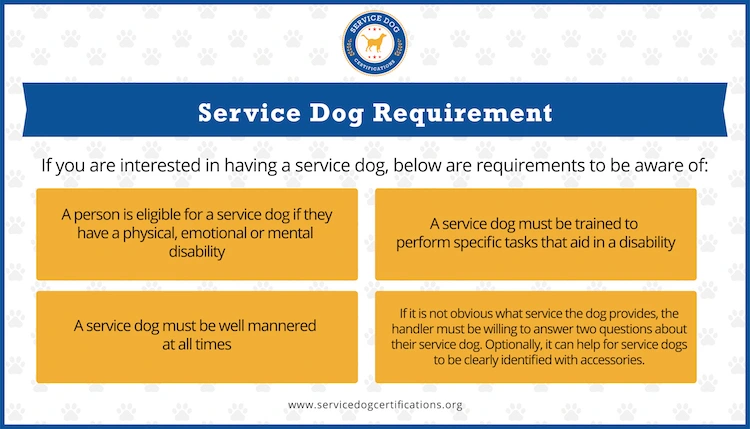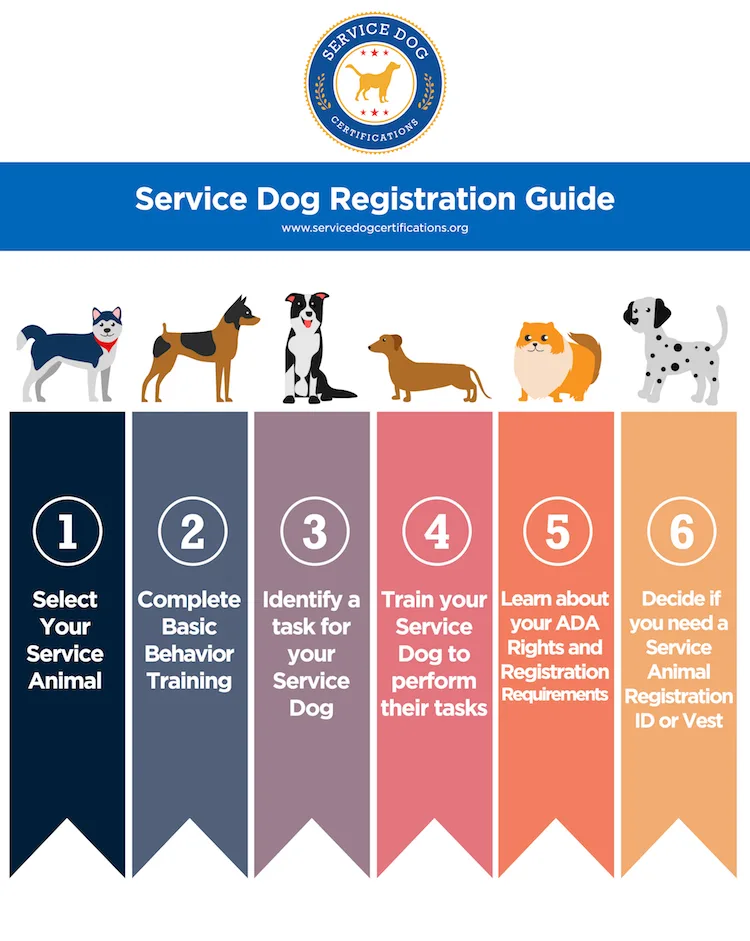Which Dog Breeds Are the Best for Deep Pressure Therapy
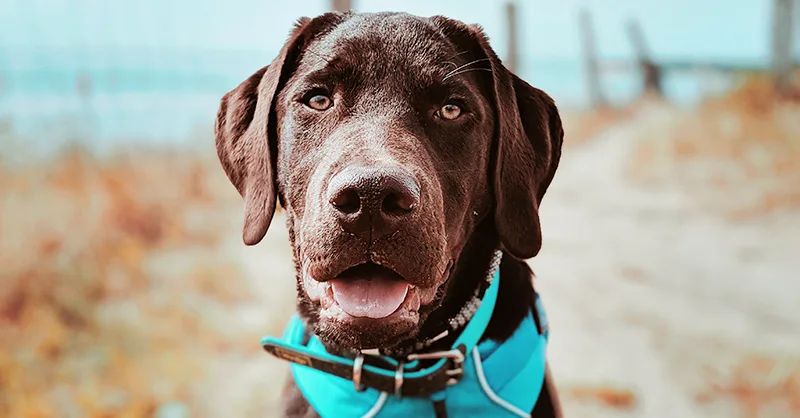
A common task performed by psychiatric service dogs is deep pressure therapy. Let’s use an analogy to explain how that works: you may have noticed the proliferation of “weighted blankets” and wondered what they were and if they work. Weighted blankets are scientifically proven to be effective at reducing the symptoms of mental and emotional disorders. Some blankets weigh up to 20 pounds. The pressure placed on the body is a form of deep pressure therapy. The blanket provides comfort, security, and focus to adults and children with conditions like PTSD, severe anxiety, attention deficit hyperactivity disorder (ADHD), and autism, which can qualify as ADA disabilities.
Service dogs can also provide deep pressure therapy to offer the same calming benefits. When a person experiences anxiety or a panic attack, a medium or large service dog can lay on their abdomen or chest, generating the same effect as a weighted blanket.
7 Best Dog Breeds for Deep Pressure Therapy
Not every dog is suited for this important work. The ideal deep pressure therapy dog possesses sufficient weight to provide meaningful pressure, a calm temperament to remain still during therapy sessions, and the intelligence to understand when their assistance is needed. Finding the right match requires careful consideration of breed characteristics, individual temperament, and appropriate training.
Apart from a dog’s good temperament, it’s important to find the right-sized service dog for deep pressure therapy to get the most effective results.
Service Dog Certifications
The following are seven dog breeds that are ideal for deep pressure therapy:
1. Golden Retriever
The Golden Retriever lands on many “best” service dog lists for a good reason. Golden Retrievers make wonderful therapy dogs because they’re the right size — between 55 and 75 pounds — heavy enough to provide good pressure without being too big. They’re naturally gentle and patient, even when the person they’re helping might move around or act unpredictably.
When it comes to training, Golden Retrievers truly excel. They’re known for their working intelligence — they can learn new commands in less than 5 repetitions. Their eager-to-please personality means they’re highly motivated to perform tasks correctly to make their handlers happy. This combination makes them easy to train for specific DPT positions like lying across legs, providing lap pressure, or applying targeted pressure to the chest during anxiety attacks.
What makes Goldens really special is their ability to understand human feelings. They often sense when someone is getting anxious before the person even realizes it themselves. This emotional awareness can be shaped through training to recognize subtle signs of distress, allowing them to begin DPT work without even being commanded. Their reliable recall and focus mean they can be called away from distractions to perform pressure therapy when needed.
Golden Retrievers do shed a lot, so you’ll need to brush them regularly. Young Goldens can be playful and energetic, so they need good training to learn when it’s time to be calm and work. But most people find that these small challenges are worth it because Goldens are so good at helping people feel better.

2. Labrador Retriever
Labrador Retrievers are excellent therapy dogs because they’re steady and reliable. Their solid build (55–80 pounds) provides good, grounding pressure. Labs generally have a calm personality and don’t get easily upset or startled, which is important during therapy sessions.
Labradors rank among the most trainable breeds in the world, which is crucial for DPT work. They have exceptional focus and food motivation that makes teaching specific pressure positions straightforward. Labs typically learn new commands within 5-10 repetitions and retain training extremely well over time. Their natural body awareness helps them learn to position themselves correctly for different pressure therapy techniques — whether lying across legs or providing targeted pressure to specific body areas.
Labs are great at adapting to different places — they can stay calm both at home and in busy public areas. This trainability in different environments is essential for service work, as pressure therapy might be needed in unpredictable settings. Their reliable “stay” command means they can maintain pressure for extended periods without fidgeting, even with distractions present. They also have good stamina and can provide therapy for longer periods when needed.
Labs do need regular exercise to stay healthy and focused. Without proper physical outlets, their training for DPT can be undermined by restlessness. They shed moderately, so some regular brushing is necessary. However, their short coat is fairly easy to care for. For families looking for a balance between a great therapy dog and manageable care, Labradors are an excellent choice.
3. Collie
Collies bring both smarts and gentleness to therapy work. Collies bring both smarts and gentleness to therapy work. Weighing between 50 and 75 pounds, they’re big enough for effective pressure therapy for older kids and adults. Collies are famously intelligent (think Lassie!) and very responsive during therapy sessions. Although energetic and playful, they’re also attentive and obedient, making them great for children with autism or ADHD.
When it comes to training for DPT tasks, Collies show exceptional learning ability. They can master complex commands in as few as 5–15 repetitions and remember them for years. Their problem-solving intelligence means they can adapt their pressure technique based on their handler’s needs in the moment. However, their sensitive nature means training methods must focus on positive reinforcement — harsh corrections can damage their confidence and willingness to perform tasks.
Collies excel at learning to read body cues through their natural herding heritage. This makes them especially good at being trained to recognize early warning signs of panic attacks or sensory overload. They can be taught to initiate DPT without being commanded, which is invaluable for handlers who might not recognize their own escalating symptoms. Their attention to detail helps them learn precise positioning for effective pressure application.
What’s unique about Collies is how attentive they are. They notice small changes in breathing or body tension that might signal rising anxiety. This awareness allows them to start providing pressure even before their person asks for help. Their soft, fluffy coat also adds a comforting feeling during therapy.
Because of their long, thick fur, collies need more grooming than some dogs. They also tend toward noise sensitivity, which requires additional training to maintain focus during DPT in louder environments. For someone looking for a smart, intuitive therapy dog that’s not too large, Collies are a great option when paired with consistent, gentle training approaches.
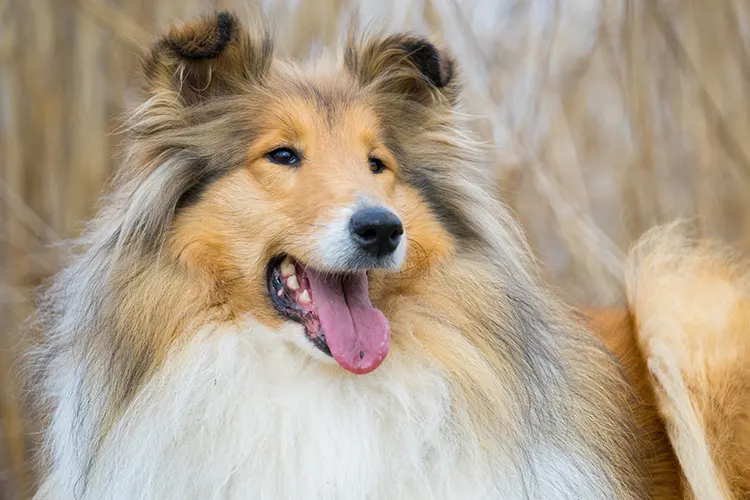
4. Labradoodle
Labradoodles offer flexibility because they come in different sizes and coat types. These dogs — a mix between Labradors and Poodles — can weigh anywhere from 30 to 65 pounds. This range lets you choose the right size for your specific needs. They also shed less than many other breeds, which means less cleaning and fewer problems for people with mild allergies.
The trainability of Labradoodles comes from their impressive genetic combination — Poodles rank #2 in working intelligence, while Labradors rank #7. This translates to exceptional learning capacity for DPT tasks, with most Labradoodles learning new commands in 10-15 repetitions. Their problem-solving skills from the Poodle side help them learn to adjust their pressure based on feedback, while their Labrador heritage contributes focus and willingness to work.
Many Labradoodles inherit the Poodle’s task-oriented work ethic combined with the Labrador’s people-pleasing nature. This makes them highly responsive to training for specific pressure positions and durations. They can be taught to maintain pressure even when their handler moves or shows distress, a key skill for effective DPT. Their adaptability also means they can be trained to provide therapy in different positions — from lying across legs to providing targeted pressure to the chest or back.
Because Labradoodles are a mixed breed, they can vary more in personality and trainability than purebred dogs. Some individuals might inherit more of the Poodle’s sensitivity or the Lab’s distractibility. It’s important to work with good breeders who focus on temperament and to assess each dog individually for service work aptitude. Their curly coats need regular professional grooming to prevent matting.
5. Samoyed
Samoyeds are like living teddy bears that provide therapy! These medium-sized dogs (45–65 pounds) have incredibly soft, fluffy white coats that make pressure therapy extra comforting. They even have a natural “smile” that can help lift spirits during anxious moments.
When it comes to training for DPT tasks, Samoyeds present a unique profile. They possess above-average intelligence and can learn new commands in about 15–25 repetitions when properly motivated. However, their independent thinking (developed from their history as working dogs who needed to make decisions on their own) means training requires consistency and creativity. They respond best to varied training sessions that keep them mentally engaged, with food rewards and positive reinforcement.
Samoyeds are naturally tuned into human emotions, having been bred for centuries to work closely with people in harsh Arctic conditions. This sensitivity can be channeled through training to recognize anxiety symptoms. With proper techniques, they can be taught to perform different pressure positions, from lying across the chest to applying weight to the legs. Their natural tendency to lean against people can be shaped into formal DPT behaviors with consistent reinforcement.
A training consideration with Samoyeds is their higher energy level. Service dog candidates need specific training for settling and maintaining pressure positions for extended periods, which doesn’t come as naturally to them as to some more laid-back breeds. Their training program must include extended “stay” commands and rewarding calm behavior. Their beautiful white coat requires regular brushing to prevent tangles and shedding. However, for people who find extra comfort in their fluffy appearance and happy nature and are willing to invest in consistent training, Samoyeds offer both physical pressure benefits and emotional cheer.

6. Great Pyrenees
When someone needs substantial pressure, the Great Pyrenees delivers. These gentle giants weigh between 85 and 115 pounds and provide deep, grounding pressure that really helps adults with severe anxiety or panic attacks. Despite their impressive size, Great Pyrenees are known for being exceptionally gentle and calm.
Training Great Pyrenees for DPT tasks requires understanding their unique temperament. Unlike many service dog breeds, Pyrs were bred to independently guard livestock, making decisions without human direction. This means they require specialized training approaches that respect their thoughtful, deliberate nature. They typically need 25–40 repetitions to reliably learn new commands — significantly more than retrievers. Training sessions must be kept positive, interesting, and relatively short to maintain their engagement.
The Great Pyrenees’ natural tendency for calmness is a significant advantage for DPT training. They can be taught to maintain steady pressure positions with minimal fidgeting — a crucial skill for effective therapy. Their natural guardian instinct makes them patient and watchful rather than nervous or aggressive. This means they can remain still, providing pressure for long periods without getting restless. Their independent thinking can actually be an advantage once trained, as they’re less likely to be distracted from their DPT task by external stimuli.
Because of their size, the Great Pyrenees need more space at home and during travel. Their thick coat sheds a lot and needs regular brushing. Their independent nature means training takes longer and requires more consistency than with more handler-focused breeds. Commands need to be reinforced regularly, and training for public access skills requires extra attention. However, for adults who need deep pressure therapy from a naturally calm companion and who are willing to invest in specialized training approaches, the Great Pyrenees is hard to beat.
Order Your Service Dog ID Here
7. Bernese Mountain Dogs
Bernese Mountain Dogs are gentle giants that make excellent therapy dogs. Weighing between 80 and 115 pounds, these big, calm dogs can provide significant pressure that really helps adults with anxiety, PTSD, or overwhelming sensory experiences. They stay steady and calm even in challenging situations.
Training Bernese Mountain Dogs for DPT tasks leverages their natural desire to be close to their people. They have moderate learning speed, typically needing 15–25 repetitions to master new commands. However, their exceptional retention means that once they learn a task, they rarely forget it. Their training should focus on teaching specific pressure positions that utilize their substantial weight effectively — from lying across the legs to providing deep pressure to the torso.
What makes “Berners” special for DPT training is that they naturally love physical contact with their people. Unlike some dogs that just tolerate being close, Berners actively seek connection, making pressure therapy feel natural for them. This innate tendency can be shaped through training into specific therapeutic positions. Their patience and gentleness help them work effectively even when their person moves around or reacts unpredictably during anxiety episodes — a skill that requires less intensive training than with more independent breeds.
Bernese Mountain Dogs have a slower maturation rate, meaning their training for complex service tasks often takes longer than with some other breeds. They’re also sensitive dogs who respond poorly to harsh corrections, requiring positive, consistent training methods. Bernese Mountain Dogs typically have shorter lives than some other breeds (usually 7–10 years) and can have certain health issues. Their beautiful tricolor coat needs regular brushing to manage shedding. However, many people find that their exceptional gentleness, natural desire to provide comfort, and excellent trainability for pressure tasks makes them perfect therapy partners despite these considerations.

Other Considerations
When choosing a deep pressure therapy dog, consider your specific needs, living situation, and lifestyle, not just the breed characteristics. It’s helpful to talk with your healthcare professional and, if possible, a service dog trainer who understands pressure therapy to guide your decision.
Remember that proper training for deep pressure therapy is more than just having a dog lie on you. The dog needs to learn how to provide the right amount of pressure in the correct positions, recognize when you need help, and stay in position despite distractions. Working with trainers who specialize in service dogs can help ensure your dog develops these specific skills.
With the right dog and proper training, a deep pressure therapy dog can change your life by helping manage anxiety, reduce overwhelming feelings, and create a sense of safety during difficult times.
Let everyone know your service dog is an indispensable part of your life with your Service Dog ID. Get your service dog registered below.
About the Author: The writing team at Service Dog Certifications is made up of folks who really know their stuff when it comes to disability laws and assistance animals. Many of our writers and editors have service dogs themselves and share insights from their own experiences. All of us have a passion for disability rights and animals.
Related Articles
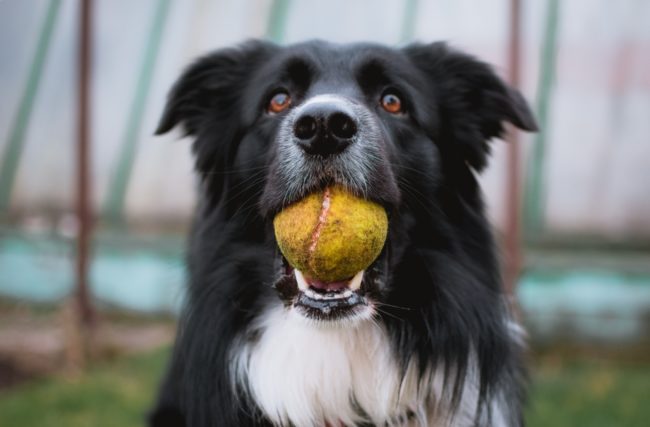
Do Border Collies Make Good Service Dogs?
When choosing a service dog, whether it be for physical or psychiatric disability, it has to be “need over breed.” Let’s face it, you may love the Chihuahua breed, but when it comes to aiding you with specific tasks, this little guy may not be up for the job. Do Border Collies make good service […]

Read More
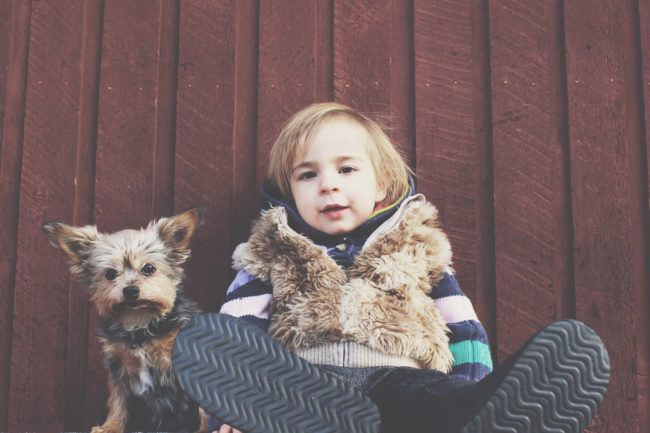
Can a Yorkie Be a Service Dog?
The Yorkshire Terrier is a big dog in a small package. With his silky coat and traditional “topknot,” the Yorkie is sure to attract attention wherever he goes. And because of his pint-size, this dog often travels in style – in designer doggy purses or special totes made just for those “elite” pooches. The Yorkie […]

Read More
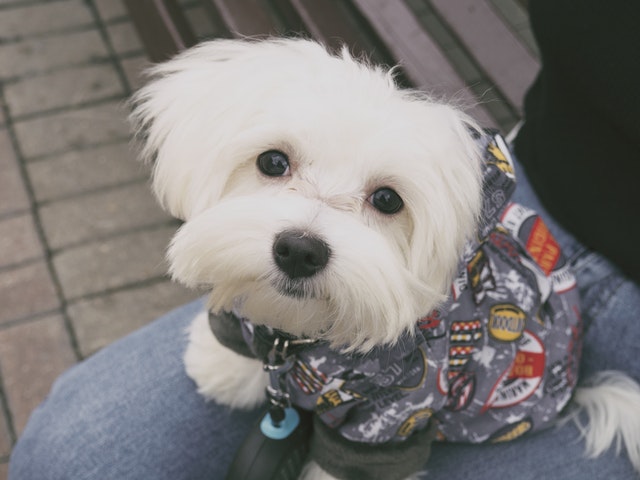
Can a Maltese Be a Service Dog?
Who can resist the snow white coat, dancing eyes, and spunky nature of the Maltese? This cute, spritely little pooch excels at many things like agility, tracking, obedience, and rally. Can a Maltese be a Service Dog? If so, you would be able to go anywhere you go with your Maltese! Read on as we […]

Read More
